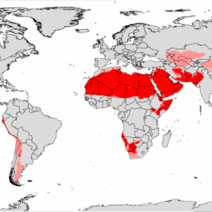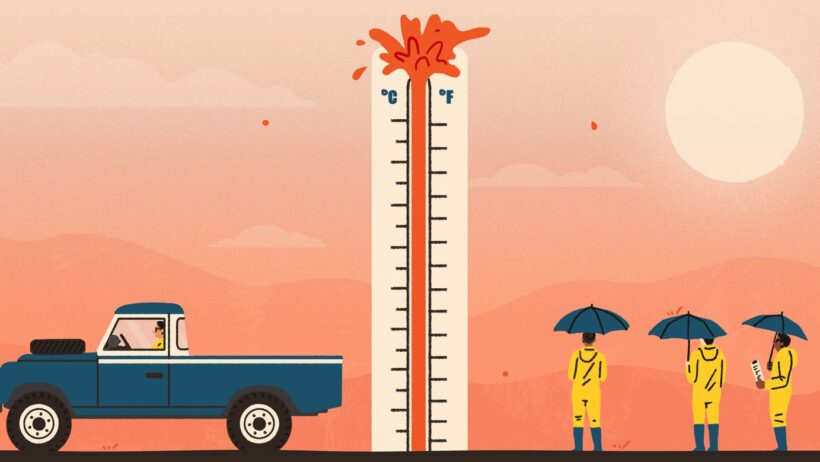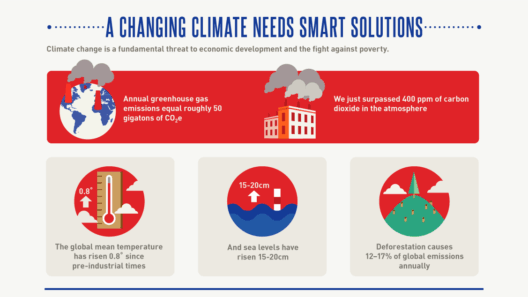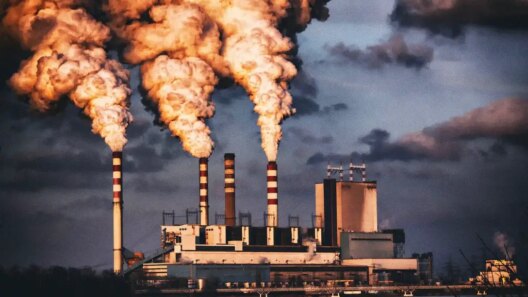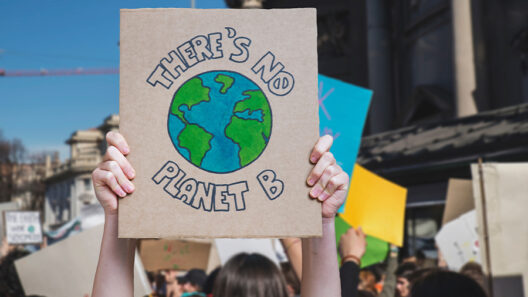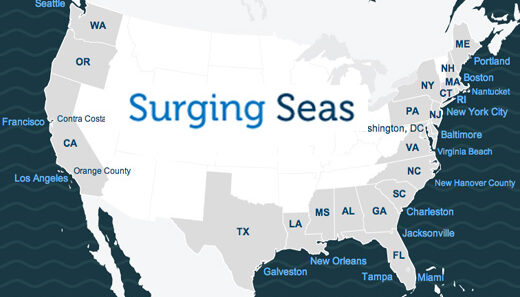Climate change has become an undeniable reality, marked by increasingly erratic weather patterns and shifts in ecosystems. While many discussions revolve around when climate change may peak or produce catastrophic effects, it is crucial to analyze the warning signs that are already emerging. Understanding these signs is vital for preparation and mitigation strategies.
The signs of impending climate change disruptions can be categorized into several key areas: rising temperatures, extreme weather events, sea-level rise, biodiversity loss, and socio-economic impacts. Each of these areas encapsulates the breadth of climate change consequences that remain on the horizon, bearing witness to the urgent warning bells sounding throughout our planet.
Firstly, the most evident and alarming sign is the rise in global temperatures. The planet’s average temperature has surged approximately 1.1 degrees Celsius since the late 19th century. This might seem inconsequential, but an increase of just two degrees could lead to devastating outcomes, such as widespread droughts and catastrophic flooding. Increased temperatures enhance the evaporation of water, leading to dryer soils in some regions, while simultaneously intensifying rainfall in others. The complex interplay can further exacerbate existing vulnerabilities in agricultural systems.
Extreme weather events represent another harbinger of climate change. Hurricanes, heatwaves, and floods have grown more intense and frequent, their characteristic ferocity significantly attributed to a warming climate. The National Oceanic and Atmospheric Administration (NOAA) has reported that the frequency of hurricane Category 4 and 5 storms has doubled since the 1970s. This intensification wreaks havoc on communities, infrastructure, and ecosystems. Regions once considered safe are now inundated with the threat of more violent storms, leaving governments scrambling for resources and response strategies.
Moreover, sea-level rise remains a harrowing consequence of melting ice caps and thermal expansion of water bodies. As a direct result of global warming, sea levels have risen about 8 to 9 inches since 1880, with projections indicating up to a two-foot rise by 2100 if current trends continue. Coastal cities such as Miami, New York, and New Orleans face existential threats from inundation. The encroachment of saltwater into freshwater supplies also jeopardizes agriculture and drinking water. Entire communities are at risk of displacement, leading to climate refugees and increasing geopolitical tensions.
Biodiversity loss serves as a poignant indicator of ecosystem health. Recent studies suggest that climate change is accelerating the extinction rates of species at an alarming pace. Approximately one million species are currently facing extinction; this figure is staggering. As species lose their habitats or fail to adapt quickly enough to changing climates, fragile ecosystems are destabilized. The loss of biodiversity not only undermines the intricate balance of nature but also compromises humanity’s ability to procure food and medicinal resources. Coral reefs, often referred to as the “rainforests of the sea,” have suffered catastrophic bleaching events due to warmer ocean temperatures and acidification, further illustrating the consequences of climate change on marine environments.
In addition to ecological implications, the socio-economic ramifications of climate change cannot be overlooked. Vulnerable populations, particularly in developing nations, are disproportionately affected. These communities may lack the adaptive capacity to respond effectively to drought, flooding, and other extreme weather phenomena. Food insecurity is exacerbated as crop yields decline under increasingly unyielding conditions. Economic disparity widens as wealthier nations allocate resources to mitigate disasters while poorer countries remain compelled to confront the brunt of climate impacts without adequate support.
The confluence of these warning signs presents a dire picture of the future if global action remains insufficient. There is a pressing need for policymakers to heed these indicators and enact climate policies that promote sustainability, resilience, and adaptation. Transitioning towards renewable energy sources offers a substantial path forward, drastically reducing greenhouse gas emissions and curbing global temperature rises. By investing in technologies such as wind, solar, and hydropower, societies can decouple economic growth from fossil fuel dependence.
Education plays a pivotal role in galvanizing communities to act. Raising awareness about the signs of climate change can empower individuals to advocate for legislative reform and engage in sustainable practices. Grassroots movements have the potential to amplify voices that demand action at every level, from local governments to international coalitions. By fostering a collective sense of accountability, societies can cultivate a culture of ecological stewardship.
In conjunction with advocacy, adaptation strategies must be prioritized. This entails fortifying infrastructure against climate impacts, implementing water conservation techniques, and promoting sustainable agricultural practices. Urban planning must incorporate green spaces and innovative designs that mitigate flooding while enhancing biodiversity in urban landscapes. Resilience building and adaptive governance can reduce vulnerability, ensuring that communities are not blindsided by climate-induced changes.
In conclusion, the questions regarding when climate change will get really bad are already being answered by the mounting and irrefutable evidence. The warning signs—rising temperatures, extreme weather events, sea-level rise, biodiversity loss, and socio-economic impacts—merely underscore the immediacy of a global response. While the future remains uncertain, it is crucial that we learn from the present and heed the warnings presented by our changing climate. Only through collective action and sustained commitment can humanity chart a sustainable path forward, mitigating the adverse effects of climate change for future generations.
